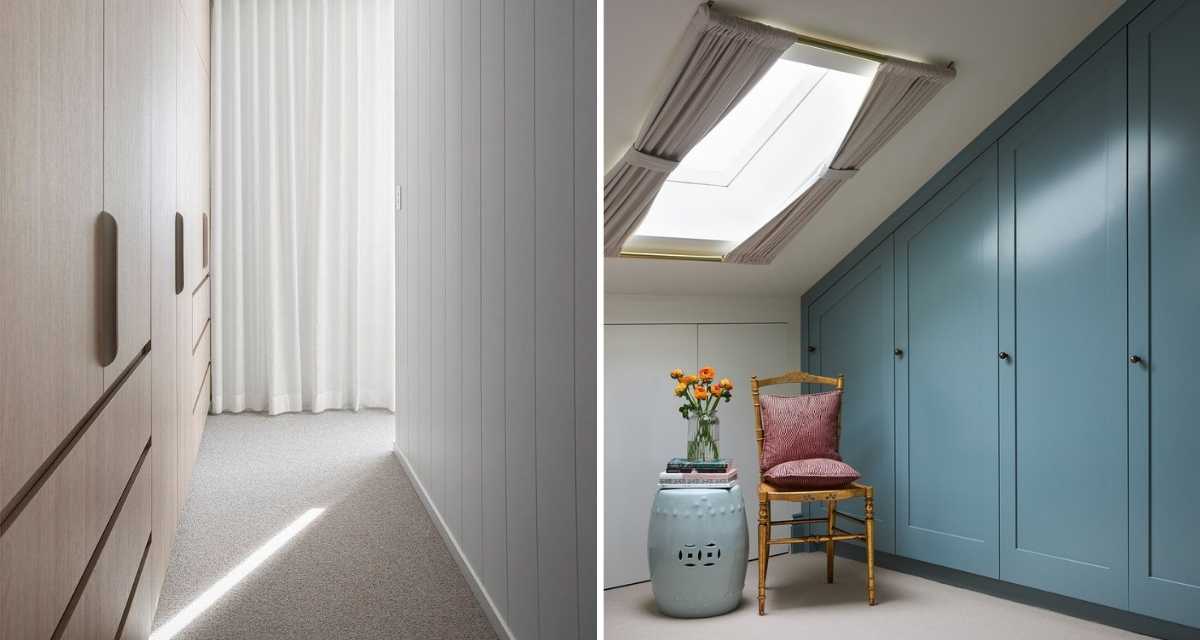Whether you’re updating an existing bedroom or moving into a new home, we know that a carefully planned and designed wardrobe is high on our clients priority lists. And if isn’t, it really should be.
Poorly designed wardrobes are such a deal breaker in my view. Having lots of available space is no good if it’s not practical to use and doesn’t suit your requirements on a day to day basis. We get a real kick out of designing bedroom wardrobe because the process encompasses both our love of design and our need for organisation. Two of our favourite OCD things in life.
PSA Alert! When it comes to designing wardrobes for your bedroom, there is a lot of reality to the process that often doesn’t align with the pretty pictures we see on Pinterest and Instagram. Sure wouldn’t we all love a beautiful walk in wardrobe, with plenty of visible storage space for every little item that we own. However for most of us a wardrobe consists of a row of cupboards along one wall in our bedroom – and a long wall if we are lucky enough.
Regardless of the layout and size of your wardrobe there are a couple of key factors you need to consider during your wardrobe planning process
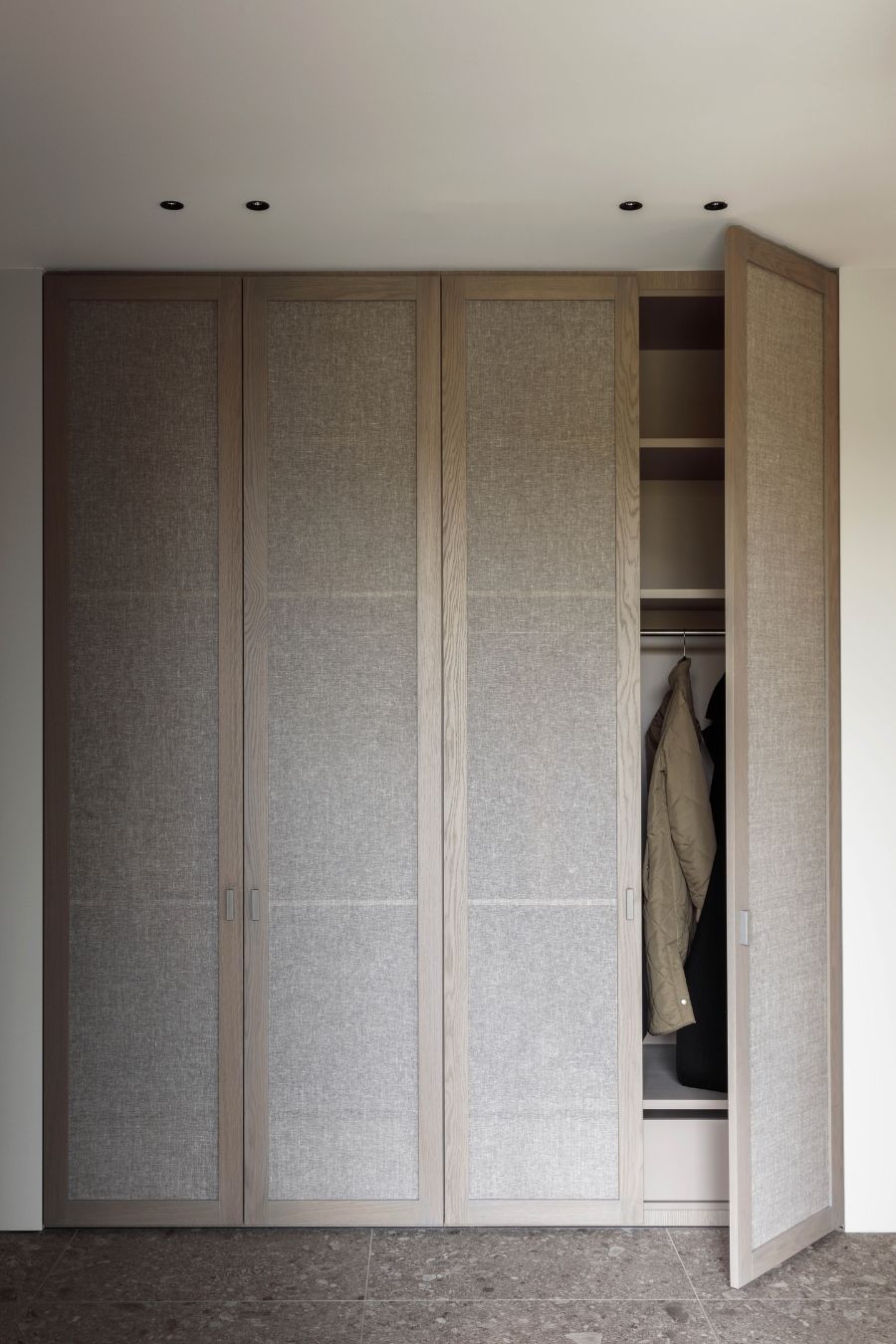 photo from Pinterest
photo from Pinterest
Do You Hang Or Fold?
One of the first question we ask our clients is whether they like to hang their clothes up, or whether they prefer to fold them. Knowing how much hanging space we need to incorporate into a wardrobe, versus shelving, is step one in our layout planning. In most generic wardrobe setups there is a mix of both, however as someone that hangs pretty much everything I know this arrangement doesn’t suit everyone.
When it comes to the visual arrangement of my clothing seeing everything hanging in a lovely neat, colour co-ordinated row makes me feel like my cupboard is organised. I also find it far easier to keep my clothes tidy on a hangar than folded on shelves. I hang everything from singlets, to tank tops, shirts, skirts, dresses, trousers, hoodies, jackets and even knitwear that can take the hangar. If I have to fold, then I want it packed away in a drawer – not on a visible open shelf.
As part of this process you also need to consider clothing length at this stage. If you’re a maxi dress kind of gal, we need to incorporate longer hanging spaces for your dress selection. For men, we also encourage as much hanging as possible as they are even less like to keep a pile of t-shirts neatly folded. And don’t separate the two sections into even heights for men. You’ll need longer hanging space for the shirts, tops and jackets, while trousers take up less hanging height.
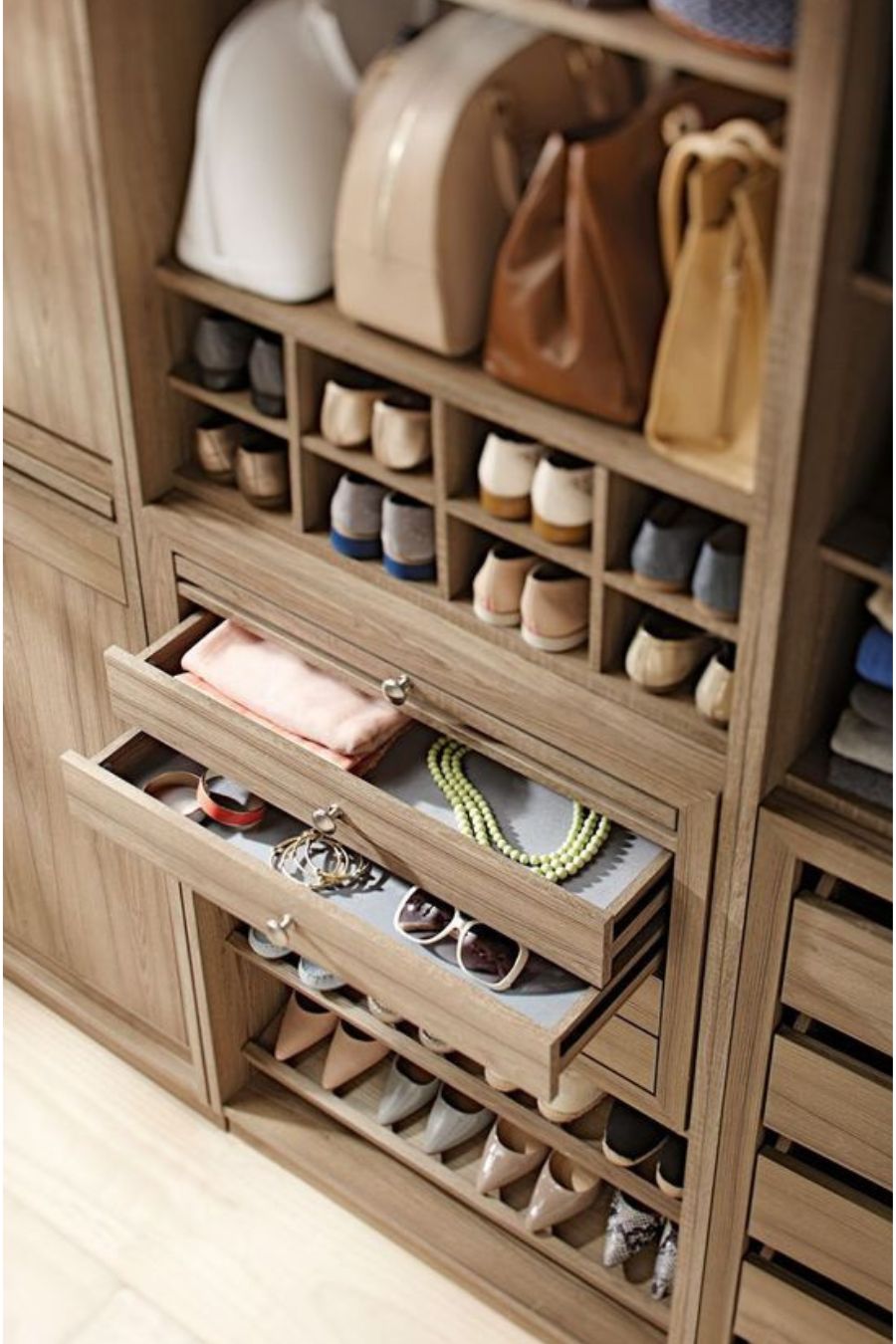 photo from Pinterest
photo from Pinterest
Shelves or Drawers?
Once we’ve established what you prefer to hang and fold, we then talk open shelves versus drawers. As I mentioned, when it comes to folding items I always opt for closed drawers for open shelves. Shelves are considered a preference for items that are used more frequently and sit higher in the cupboard, while drawers are for concealing items and lower parts of the wardrobe.
When it comes to budget, remember that open hanging space and shelves is a lot more cost effective that many many drawers. This is because shelves don’t require the hardware that drawers do, but trying to access an open shelf at the bottom of a cupboard is the pits, and at the very least we always try to make the bottom row or two drawers rather than shelves.
We typically assign drawers for accessories, underwear, socks, sleepwear, beachwear and sports clothes. My jerseys that I don’t hang go in drawers, and so do my shorts. Again that’s just because looking at open shelves full of even reasonably tidy piles of clothing disturbs, so everything goes into drawers.
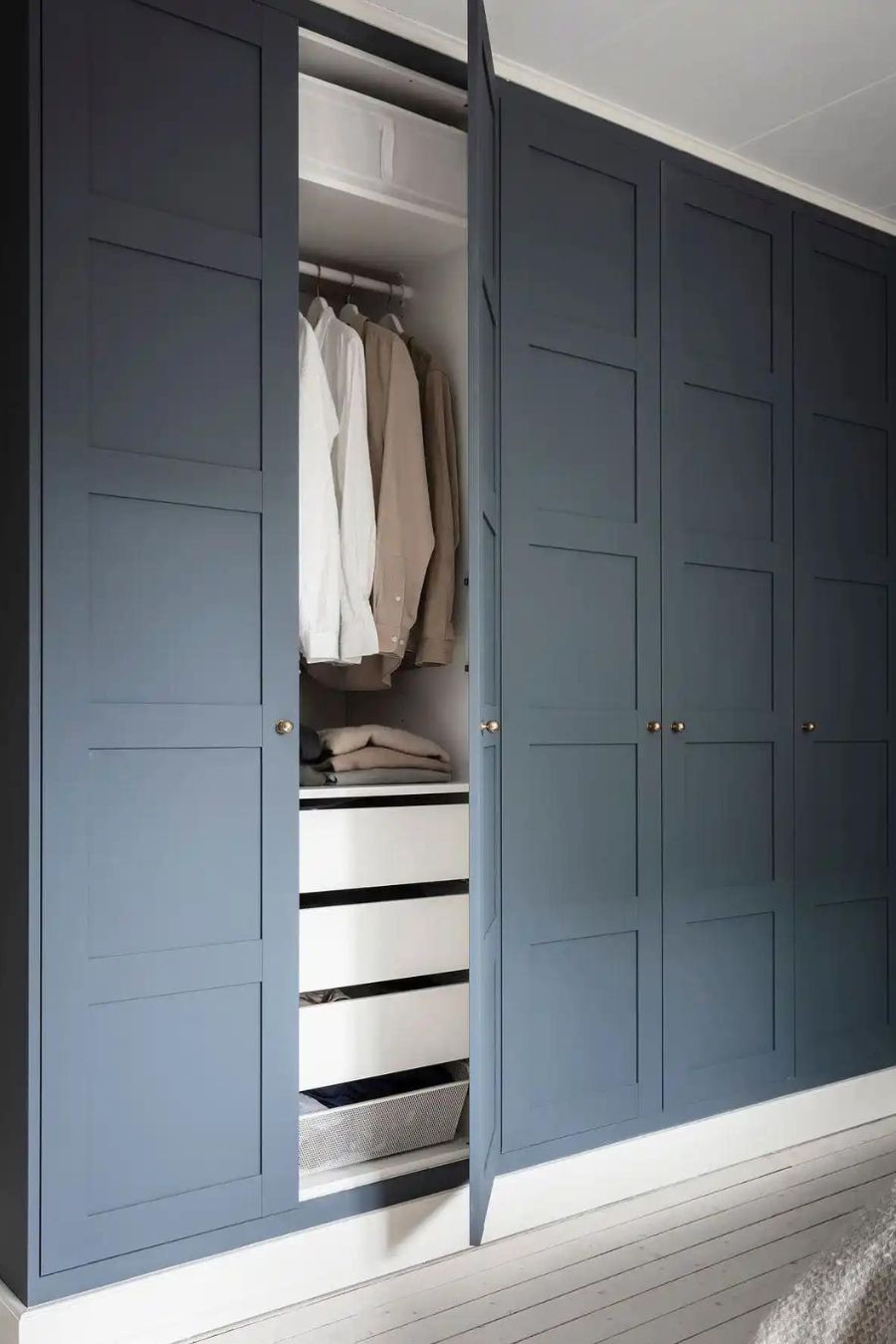 photo from Coco Lapine Design
photo from Coco Lapine Design
Where Do My Accessories Go?
Once we’ve worked through the majority of your clothing, we focus on the accessories, with shoes being the big one.
Here again we need to do a recon on what you own. Are you a sneaker head or is it heels all the way? Boots require height discussions for proper storage, especially as they can vary in height so much. We read a stat the other day – the average woman has 40 pairs of shoes, compared to the average man who owns 10 pairs of shoes.
From a space planning perspective, more shoes can fit on a flat shelf (stored heel to toe for maximum efficiency), however I prefer shoe hatches so that we can maximise the vertical space rather than the horizontal space.
Shoes, bags, hats, and personal items like jewellery are all discussed at this time, as well as priorities in storage. Since we are constrained by the size limits of the space, not everything is going to get its own personal hatch, so we need to know which items you are happy to place together as a space saving measure. If you follow us on instagram, then you might have seen my storage planning included keeping my bags and personal accessories in my home office space. Since I don’t have tons of wardrobe space in my bedroom this was an easy way to free up space in my bedroom wardrobes for my clothing.
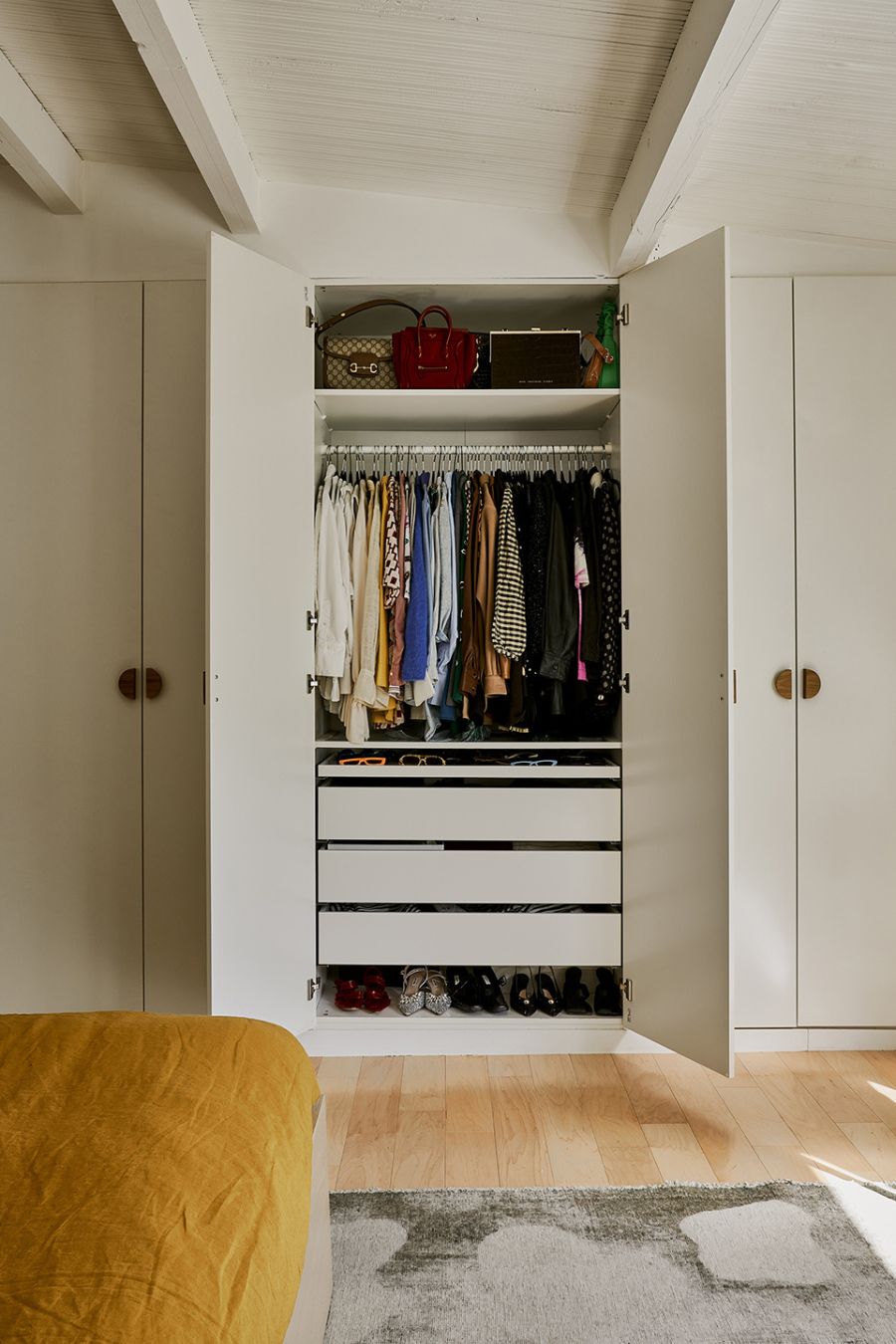 photo from Domino
photo from Domino
Mirror Mirror On The Wall
While I know many women dream of their own vanity station, often integrated into their wardrobes, we like to advise our clients not to have a vanity and makeup station within their wardrobe design. Why? Space is the number one reason. Unless you have a lot of wall spaces to play with, this takes away valuable real estate space from your wardrobe storage.
Instead we recommend a dedicated vanity area somewhere else – whether in your bathroom or as a standalone piece in your bedroom. There are many beautiful vanity pieces and you can consider creating a statement elsewhere in your room. We also encourage all makeup spaces to be in or close to the bathroom, which often requires you to be able to wash your hands or clean up some mess during the process.
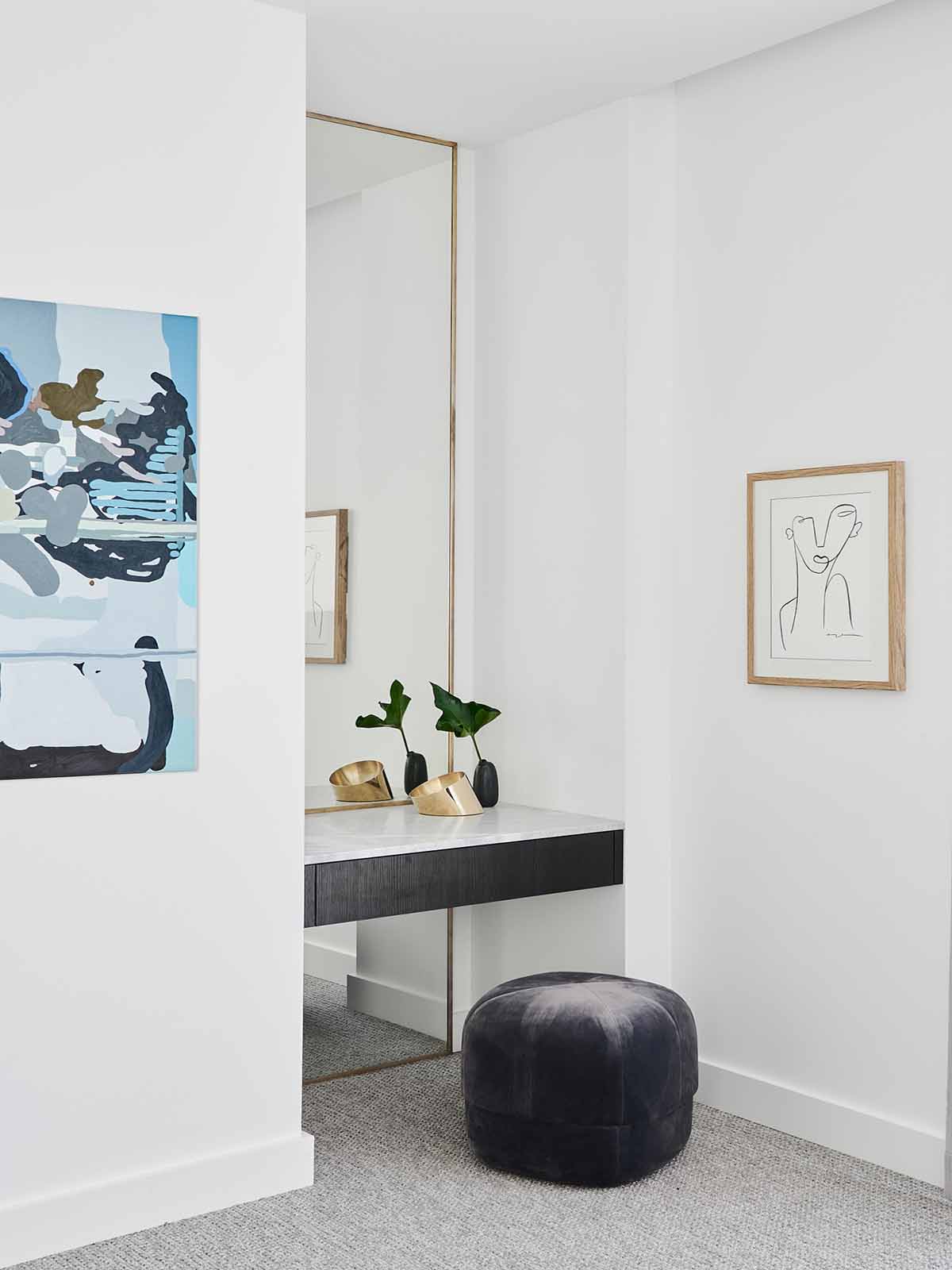 Photo from Est Living
Photo from Est Living
Layout
Having gone through what you own and what your storage priorities are, we then move onto the layout planning. With every wardrobe I like to create the “main” wardrobe and the “secondary” wardrobe. The main wardrobe is for all your daily clothes – the stuff you love and wear the most. Those items you wear out of the house.
The secondary wardrobe contains all your hard working clothes – your sports gear, your slouch around the home and lounge wear collection, your collection of hoodies that perhaps you can’t get rid of but you will never wear in public. Then if you have the space and the clothes, we also like to have a wardrobe dedicated to jackets only. For the really big winter jackets that always take up too much space. These guys require a whole hanging section on their own.
We love this approach to separating the functional elements of your wardrobe, as it works towards elevating the overall feeling of your clothing. Whether you consider yourself a fashionista or not, you’ve spent money on these clothes and it’s what you feel good in, so we like to take care of them.
For the most part, we try not to take a seasonal approach to wardrobe design. We like to have all items contained in one space and have it visible throughout the year, so you can see at a glance what you own. Since we prefer a Less is More approach to most things, we also believe this helps you have a better understanding of what you own and how and when you use your clothes.
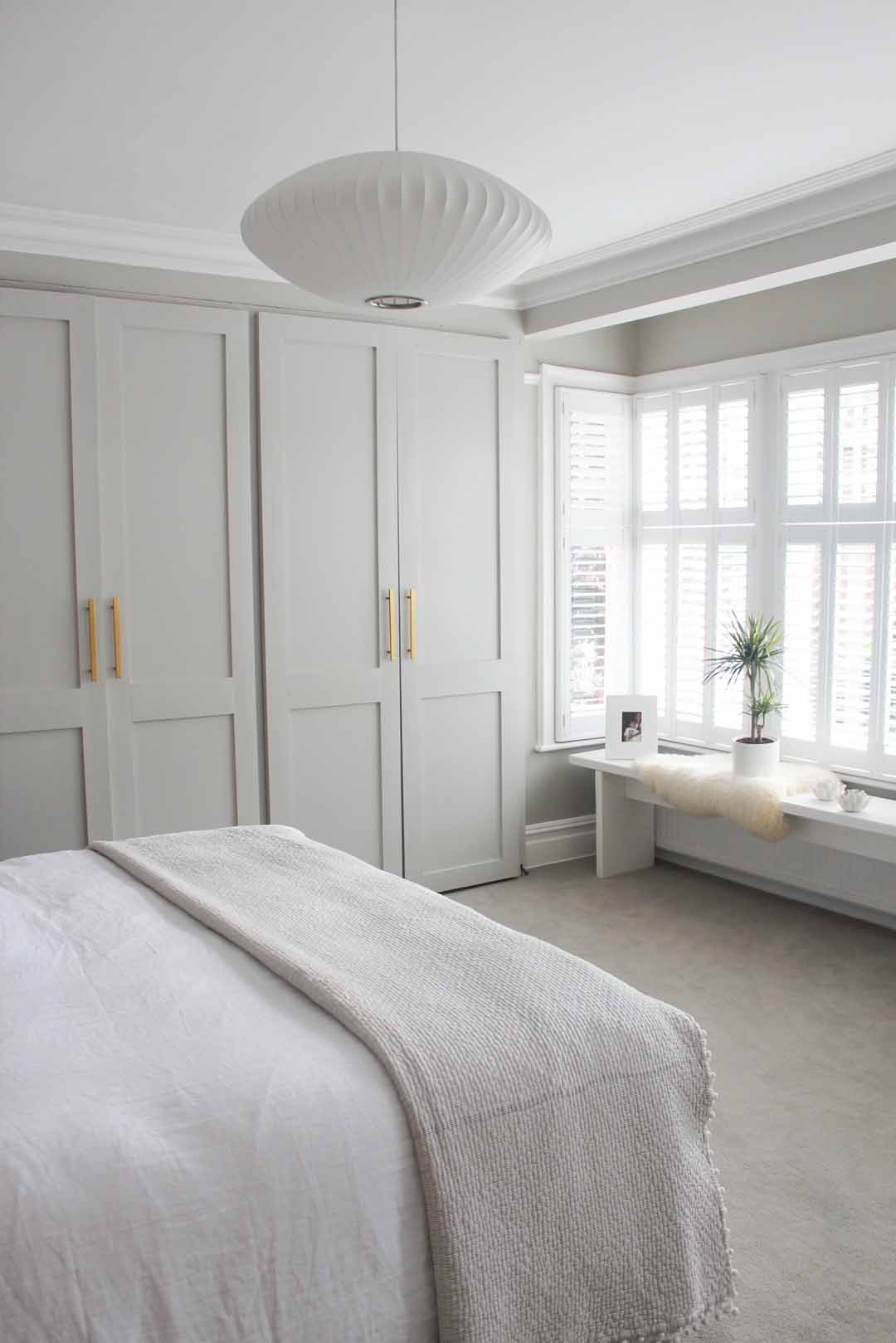 photo from Aneli Bluch
photo from Aneli Bluch
The Look and Feel
No doubt you’ve heard the sentiment that it’s only what’s inside that counts. Clearly that phrase isn’t referring to your closet doors! More and more these days we see beautiful, custom designed door fronts. It’s an easy way to give a simple cupboard carcass an upgrade. In fact, when we talk about joinery design with our clients this is what they tend to focus on the most, (over the internal structure and functionality)
Choosing the overall look and feel for your wardrobe is very much related to the style and colour palette of your home, and specifically your bedroom. If your bedroom has a classic style, then a shaker design will suits your space. For contemporary spaces a slim shaker edge detail gives the door a refined look and for uber minimal you could simply have a flat panel, however in this instance materiality counts! Door details vary greatly and this should not be overlooked as part of the design process.
Naturally we suggest choosing a colour that you are more likely to feel comfortable with in the long run. My preference is to colour match the joinery to the walls, so that the units “disappear” against the walls. That doesn’t mean the doors need to be boring.
White is the obvious choice for many, and if the budget allows a light wood veneer is a very practical choice. It’s durable against scuffs and scratches, especially for kids, it brings warmth to the setting and works with most design styles. For the interior carcasses white melamine is the typical choice across most suppliers, however I also like the light colour option for a slightly lux finish. My personal view is that the clothes don’t look as good against the wood backdrop as they do against white or light grey. That is a deeply personal choice and I simply would never have an interior wood finished wardrobe, however many clients have and love it.
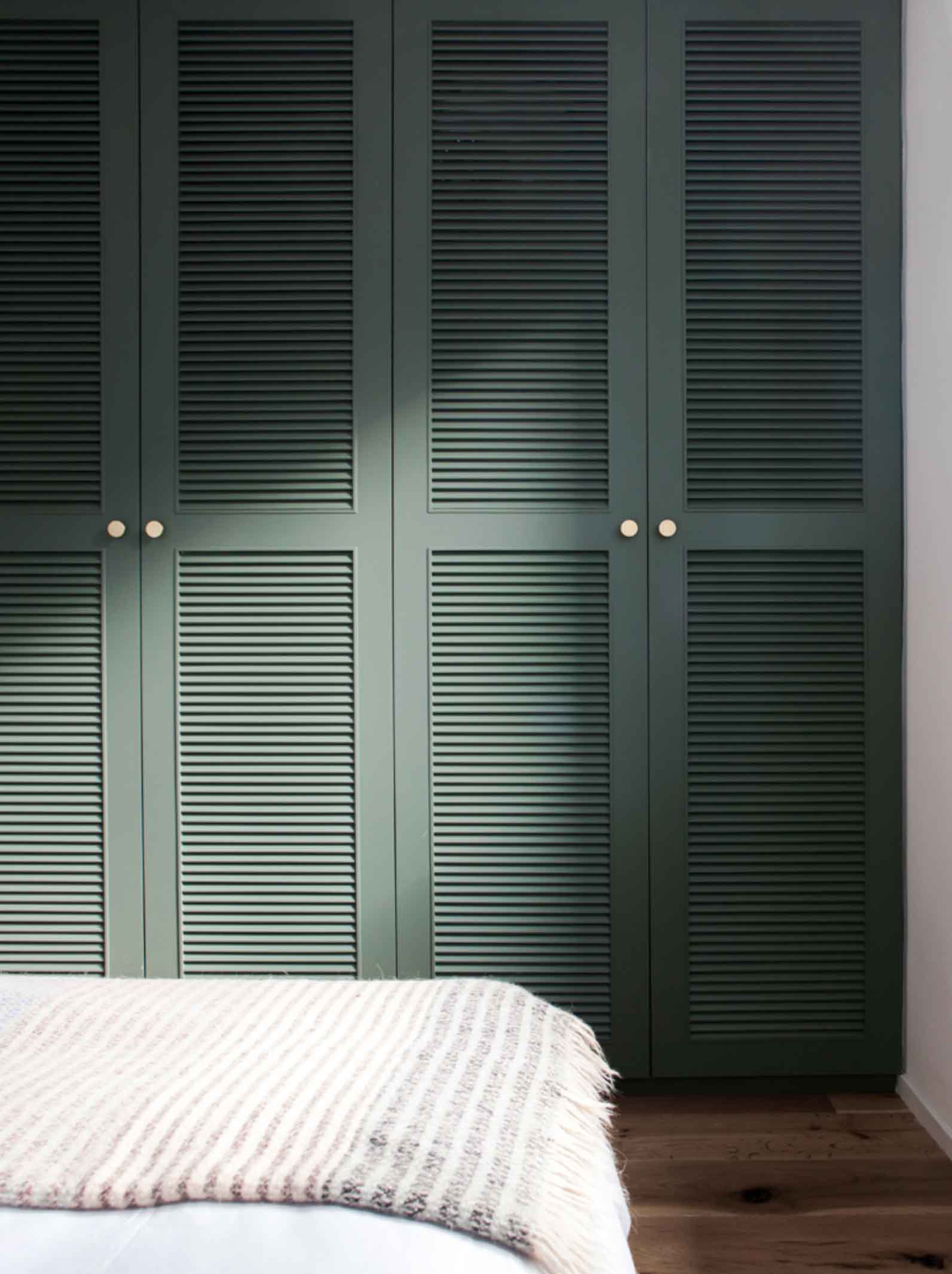 photo from Design Boom
photo from Design Boom
Hardware + Finishes
When it comes to the design of your wardrobe, you can also consider backlighting as part of the design process. If you have the budget, then having LED lighting incorporated into the joinery offers practical low lighting, as well as an ambient glow. For the most part, good lighting comes down to have enough lighting in your bedroom to adequately light up your wardrobe interiors.
Handles are the final jewellery selection for your wardrobe, and not the time to skimp. To keep costs down a simple and sleek knob is a good choice, however feature handles can also make or break the design of your door fronts. Since cupboards doors are a high use item, we definitely suggest handles over a push to close system – especially in kids rooms where the hardware may not last adn you’ll end up way too many fingerprints on the door fronts.
If you feel your wardrobe needs a makeover, inside or out, we recommend updating basic details, such as the cupboard doors, finish details, handles or colour. This is a simple way to elevate the overall style of any closet without having to replace the entire unit. These small but important finishing details are how you personalise your units to suit your bedroom.
If you are having trouble creating your own customised wardrobe, contact us on projects@thehomestudio.co.za to arrange a personal design consultation.


